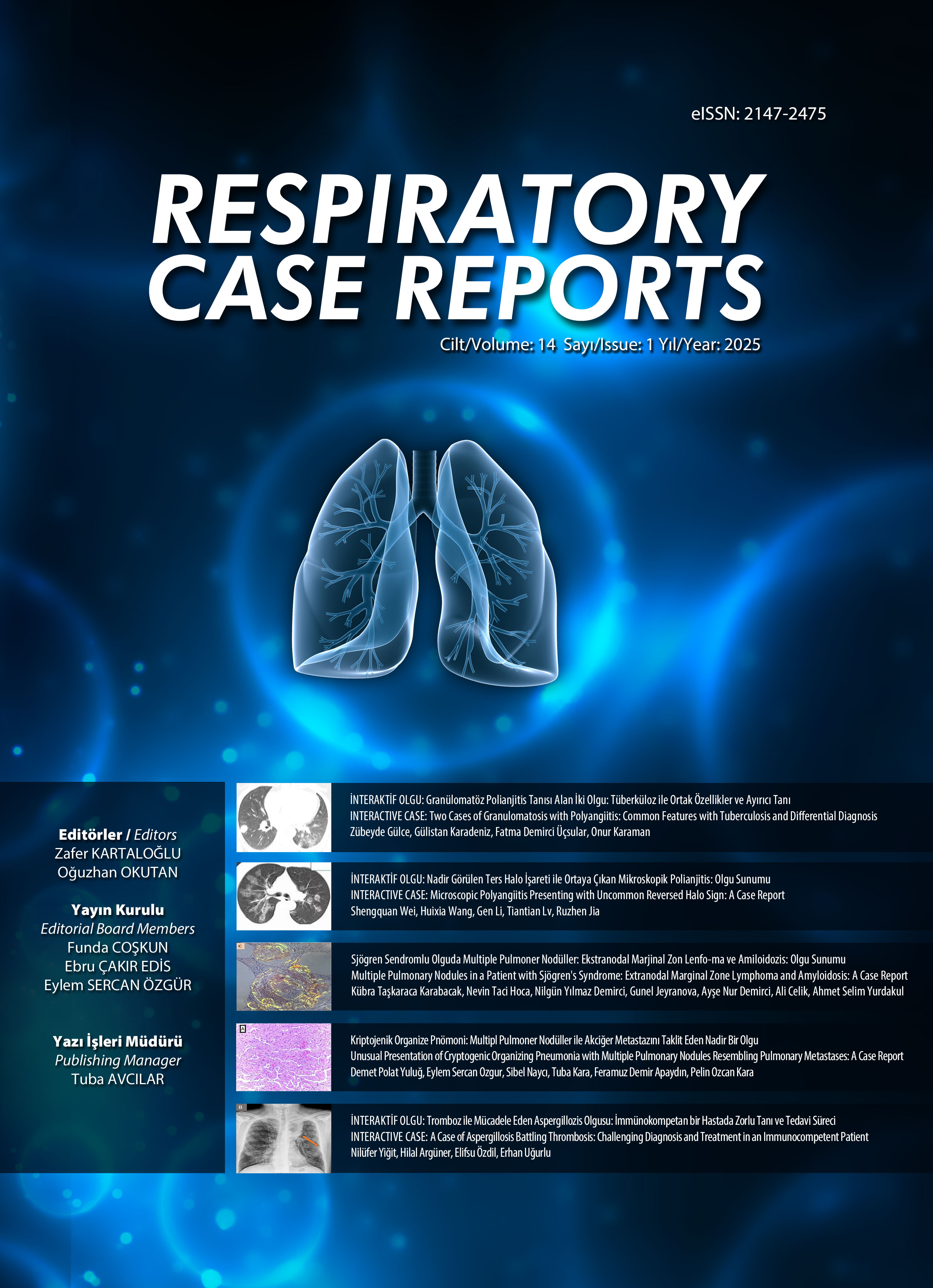
Trakeomalazili iki olgu
Ahmet Arısoy1, Hanifi Yıldız2, Mehmet Hakan Bilgin3, Selami Ekin11Yüzüncü Yıl Üniversitesi Tıp Fakültesi, Göğüs Hastalıkları Ana Bilim Dalı, Van2Özel Lokman Hekim Van Hastanesi, Göğüs Hastalıkları Kliniği,Van
3Özel İstanbul Hastanesi, Göğüs Hastalıkları Kliniği,Van
Trakeomalazi yönetimi zor olan ciddi bir hastalıktır. Bu hastaların muayene bulguları KOAH ve astım hastalarına benzerdir. Bu nedenle tanıda yanılmaya sebep olabilir. Bu çalışmada, inhaler tedavilerden fayda görmeyen iki trakeomalazi olgusunu sunmayı amaçladık. Hastalar bilgisayarlı tomografi, bronkoskopi ve polisomnografi ile değerlendirildi. Birinci olgu 83 yaşında erkek hasta idi. Elli paket-yıl sigara anamnezi vardı. Hasta öksürük şikayeti nedeni ile hastanelere başvurmuş ve 10 yıldır KOAH tanısıyla takip edilmişti. Polisomnografi ile uykuda obstrüktif apneleri tespit edildi. Arttırılan pozitif basınca rağmen apneleri düzelmedi. Bilgisayarlı tomografi ile trakeada yassılaşma, trakeal halka ve kıkırdaklarda bozulma tespit edildi. Trakeal stent takılan hastanın birinci yılın sonunda uyku apnesi yoktu. İkinci olgu beş yıl boyunca kronik öksürük nedeniyle farklı inhaler tedaviler verilen 66 yaşında bir erkek hastaydı. Hastanın öksürüğü sert ve gürültülü idi ve uyku apnesi yoktu. Bronkoskopide expiryumda trakeanın ön ve arka duvarının birbirine yapıştığı görüldü. Trakeomalazisi hayatı tehdit etmediğinden takibe alındı.
Anahtar Kelimeler: Apne, trakeomalazi, öksürük, uykuTwo cases with tracheomalacia
Ahmet Arısoy1, Hanifi Yıldız2, Mehmet Hakan Bilgin3, Selami Ekin11Department of Chest Diseases,Yüzüncü Yıl University Medical Faculty, Van,Turkey2Deparment of Chest Diseases, Private Lokman Hekim Van Hospital, Van, Turkey
3Deparment of Chest Diseases, Private Istanbul Hospital, Van, Turkey
Tracheomalacia is a difficult to manage condition. The symptoms are similar to those of COPD and asthma patients. This may cause misdiagnosis. Herein, we present two tracheomalacia cases who received no benefit from inhaled treatment. The patients were examined via computed tomography (CT), bronchoscopy, and polysomnography. The first case was a 83-year-old male having a 50 package-year smoking history. He applied to the hospital due to coughing and followed for COPD. Obstructive sleep apnea was detected via polysomnography. Despite increased positive pressure, the apneas did not heal. On CT, trachea flattening and tracheal ring and cartilages deterioration were detected. The patient had no sleep apnea one year after stenting. The second case was a 66-year-old male having inhaled treatment for five years for chronic coughing. In bronchoscopy, anterior and posterior parts of trachea were seen to cleave into each other in expiration. Since his tracheomalacia was not life-threatening, he has taken under follow-up.
Keywords: Apnea, cough, tracheomalacia, sleepMakale Dili: İngilizce











